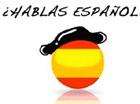 |
|
 |
|
| Visite: 1664 | Gradito: |
Leggi anche appunti:William BlakeWilliam Blake Blake ( 1757 - 1827 ) was a romantic author. Romanticism Prehistory and History of ComputersPrehistory and History of Computers The origins of the computer are very recent (the The rise of the novel and his characteristicsThe rise of the novel and his characteristics Literature is always linked |
 |
 |
ITALIAN CUISINE
Our great cookery patrimony may go up to the traditions of the ancient Greek and Roman civilizations; in fact in some regional cuisines there are signs of their presence. The Italian cuisine, that today is famous all over the world, has developed during the centuries so much that it has reached the wonderful forms that we all know.
In the 1200's the cookery and its recipes were kept in the noble courts and in the convents where it was full of ingredients but simple in the preparation with plentyful of spices. Among the poor people, instead, there wasn't a determinate cuisine but only few ingredients cooked in simple ways.
In the 1400's the Reinassance cuisine made itself known becoming particularly scenic and rich; for the first time in the history the cooking is the representation of the grandiosity giving an important role to the appearence of the dishes. The tastes got more and more sofisticated but this armony will be revolutioned by the arrival of new products from America.
TUSCANY CUISINE
Naturally we are most interested in the Tuscany cuisine because we always live surrounded by this charming traditions that we'll try to show you.
Tuscany is one of the best known region of Italy; famous for its countryside, its history, its art, its architecture, its wine. This very large region , right in the middle of the country, has hills covered in olive groves and vineyards, it has mountain forest of chestnut, oak and musk, a long sandy costline and spectacular islands; its winters are cold and summers very hot. Its cuisine is simple, genuine, best cooked with the scent of wood fires. Simplicity and sobriety are the foundamental characteristics of Tuscan cooking.
LOCAL SPECIALITIES
Tuscan cooking has many peculiarities. Soups, for example, are great favourites made with beans or pasta or black cabbage; vegetables and greens are really appreciated, first of all Cannellini beans, small and tender. Vegetable soup, including the famous 'ribollita', is made from the local vegetables and its name, that means 'boiled again' comes from the second boiling which increases the density and improves the flavour. Bread is used in many ways, the particular salt free country loaf. Stale bread is soaked in water and added to many dishes, soups, starters, salads. Bread is also used as a snack with oil and garlic, the typical 'Fettunta', or covered with chicken liver spread, to make Crostini served near the open fire in many restaurants, to welcome the guests with a glass of local red wine.Tuscan meats, especially beef, are famous for their tasty tenderness cooked on a spit or grilled, the appreciated Fiorentina or T-bone.
Chestnuts, that we'll examine closely later, are used for both sweet and sour dishes.The most famous Tuscan cheese is the Pecorino, made with sheep milk, from the Siena area, eaten at the end of a good meal.A local saying that captures the irony of the Tuscans is 'Do not let the peasant know how good cheese with pears is'.The salamis and hams are made of both pork and wild boar.Mushrooms from the woods accompany many dishes as do the sublime blacktruffles.
Sea food dishes are wonderful, like the typical 'Cacciucco' fish stew that mixes all kinds of seafood, including fish, molluscs, crustaceons, eel, polypus.It's cooked for many hours and then is ladled over a thick slice of toasted bread flavoured with garlic.
Now we're going to examine more closely some typical Tuscan products that point up perfectly the soul of our splendid region.
CHESTNUTS
For centuries chestnuts have been the staple diet for woodcutters, farmers and shepherds who simply either boiled or roasted them.Chestnuts were used as basic ingredients in many dishes such as 'polenta'(a kind of maize pudding), bread, soups and cakes.Recently rediscovered by even the more sophisticated gourmets, the taste of this simple fruit has never been forgotten by the rural gastronomical tradition.The best chestnuts come from Mugello, a wonderful part of Tuscany, where their special characteristics have been recently recognized by the European Community.In Mugello there are often Chestnut festivals, especially in October, where it is possible to taste and buy the typical gastronomic specialities, both salty and sweet ones, among which 'tortelli di marroni'(pockets of pasta stuffed with chestnuts) or 'chestnut jam'.
EXTRA VIRGIN OLIVE OIL
For traditional Tuscan cuisine, extra virgin olive oil is not simply an ingredient or a condiment but a very important gastronomical product by which-like wine-good cooking is judged.Due to the morphology of our region, many types of olive oil are produced in Tuscany.The flavour of each ones changes even within a radius of a few kilometres though all are equally excellent.The oil produced on the hills surroinding Florence is the best in Tuscany.It is a delicate oil yet full of flavour, light green and with a strong aroma that leaves a slightly burning sensation in the throat.It enjoys a very high status in our region and during the olive pressing period, dinners are frequently organised as an occasion to taste the new oil.It must be eaten uncooked either on bruschetta(slices of toasted crusty bread smeared with garlic) or poured over vegetables.It is excellent with beans, chick peas and black cabbage.
Altough we are especially proud of Tuscan cuisine, we can't mention two very famous Italian products, diffused all over the world:pasta and pizza.
PASTA:1000 YEARS AND MORE OF HISTORY
The first hint we have of pasta comes from the tools used for making and cooking pasta found in an Etruscan tomb.Around the Year 1000, we have the first documented recipe for pasta in the book 'The Art of cooking Sicilian macaroni and Vermicelli' written by Martino Corno, chef to the powerful Patriarch of Aquileia.Pasta was certainly well known in Arab countries;from these countries it spread to Greece and Sicily(then an Arab colony).In fact, Palermo was the first historical capital of pasta, because it is here that we have the first historical sources referring to the production of dried pasta in what seems like a small-scale industrial enterprise.
A document from 1244 and another from 1316 testify to the production of dried pasta in Liguria as well.Between 1400 and 1500 the production became quite widespread in Liguria, as demonstrated by the founding of the Corporation of Pasta-Makers in 1574 in Genoa.
In the 17th century in Naples population growth was aggravating the problems of food accessibility, until a small technological revolution(the spread of the kneading machine and the invention of the mechanical press) made it possible to produce pasta at a muchlower price.Pasta thus became the food of the people.
In Naples pasta was made by mixing semolina dough by foot.The pasta maker sat on a long bench and used his feet to mix and knead the dough.The king of Naples, Ferdinando II, was not happy with this method and hired a famous engineer(Cesare Spadaccini) to improve the procedure.The new system consisted of adding boiling water to freshly-ground flour, and kneading by foot was replaced by a machine made of bronze that perfectly imitated the work done by man.By the years went onpasta reached the shapes and the tastes that we know today.
THE ARCHITECTURE OF PASTA
Pasta is not measured at a distance but by the tongue and taste buds:it is architecture for the mouth, made of shapes, surfaces, fragrance, taste
Only with the mouth it is possible to distinguish between all the types of pasta, without seeing them.And only with the mouth they develop their various characteristics that on sight can often seem to be similar.
The story is that with the art of pasta a new age begins for cooking.The tie that each shape has with an area in Italy, the legends, the traditions related to it, are the natural explanation of such a vast variety.The shape of the pasta is the expression of historic demands and local whims.Food is the most ethnic thing one can imagine, therefore Italians also express their differences trough the different shapes of the pasta.There are at least 300 shapes of pasta consumed in Italy, that can be classified as fresh pasta(simple or stuffed), dry pasta, in which we find long shapes(full or hollow), short, thin, curled, smooth, ribbed.There are also the egg pastas and those with vegetables.
The art of pasta is helped by small elements made by hand, in geometry that is difficult to find in nature.'Ziti'pasta, for example, get their name from the woman that is to become a bride, in Naples called 'zita'.In fact it is the classical pasta for a wedding banquet.The architecture of pasta, therefore, is a long story of daily love, of sparks of genius, traditions, customs, local differences and universal good Italian eating.
PIZZA
Pizza is the most and best known dish of Italian cuisine throughout the world.Everyone, even in the most remote places on earth, has tasted a pizza once in his life.It was born in Naples where it was first seasoned with tomatoes and afterwards with numerous different ingredients and it is a concentrate of the flavours, smells and fantasy of this splendid city.It is a complete aliment that gloriously satisfies the five senses.
The use of word 'pizza' is so much diffused thet someone is even doubtful about its origin:It is absolutely Italian as it derives from Latin.Here is everything there is to know about it.
HISTORY
Pizza is a very old form of food.Egyptians, Greek, Romans ate dishes that remind pizza in their ingredients and cooking.In Naples pizza will find its fatherland and the starting point of its worldwide diffusion.
Flat round bread evolved into pizza in the 18th century when tomatoes made their way into cooking.Pizza was originally sailor's food;on their return from fishing the baker's prepared them pizza with fresh tomatoes, oil and garlic(this is the classical Marinara pizza).At these times pizza was baked in ovens and then sold in the streets of Naples:a boy, who balanced on his head a tin stove in which pizza was kept warm, brought directly to his customers the pizza, after attracting their attention with his loud and typical calls.Starts consequentely the habit of eating pizza at these ovens as well as in the streets or at home, a sign of the growing favour known by this course: the pizzeria, in its modern sense, is born.The King of Naples Ferdinando II of Borbone greatly enjoyed the pizza and established that the kitchens of his palace should have the pizza oven.As a result pizza became also an aristocracy dish.After the Kings of Naples, also the new Kings of Italt, The Savoia, appreciated the Neapolitan pizza:in fact they left a mark in the history of pizza:Pizza Margherita, that was dedicated to Queen Margerita of Savoia and that is the name by which this pizza is still universally known.
Now we hope you've grasped at least a little the spirit of our country and you''ll look forward to visiting Italy.
 |
| Appunti su: |
|
| Appunti Francese |  |
| Tesine Spagnolo |  |
| Lezioni Tedesco |  |